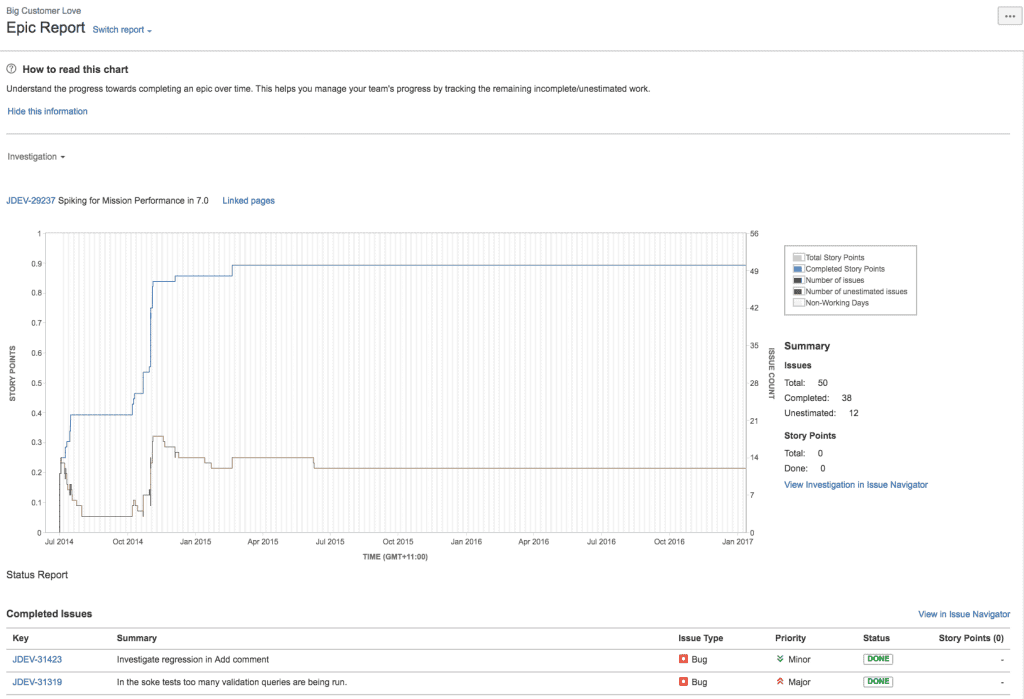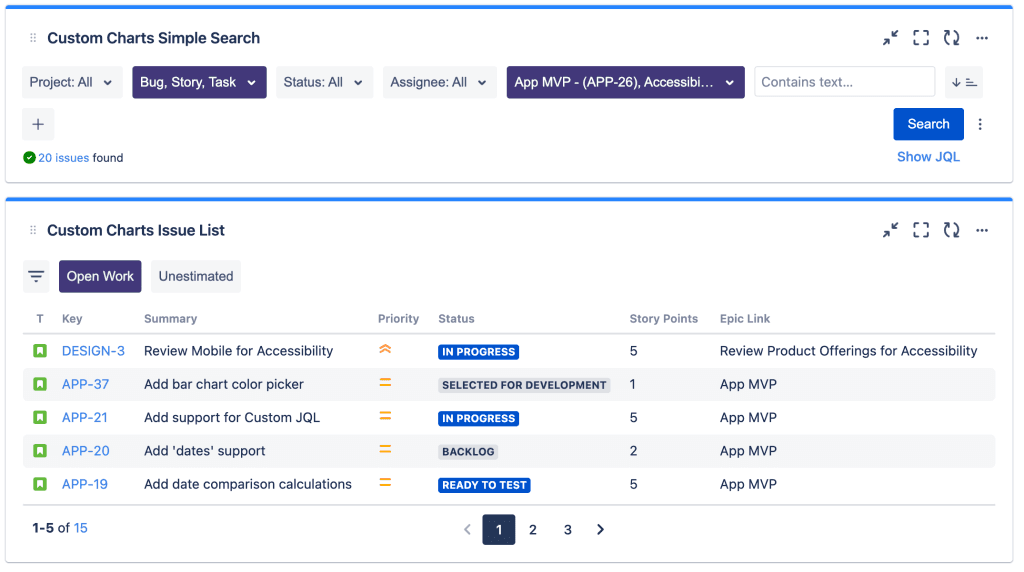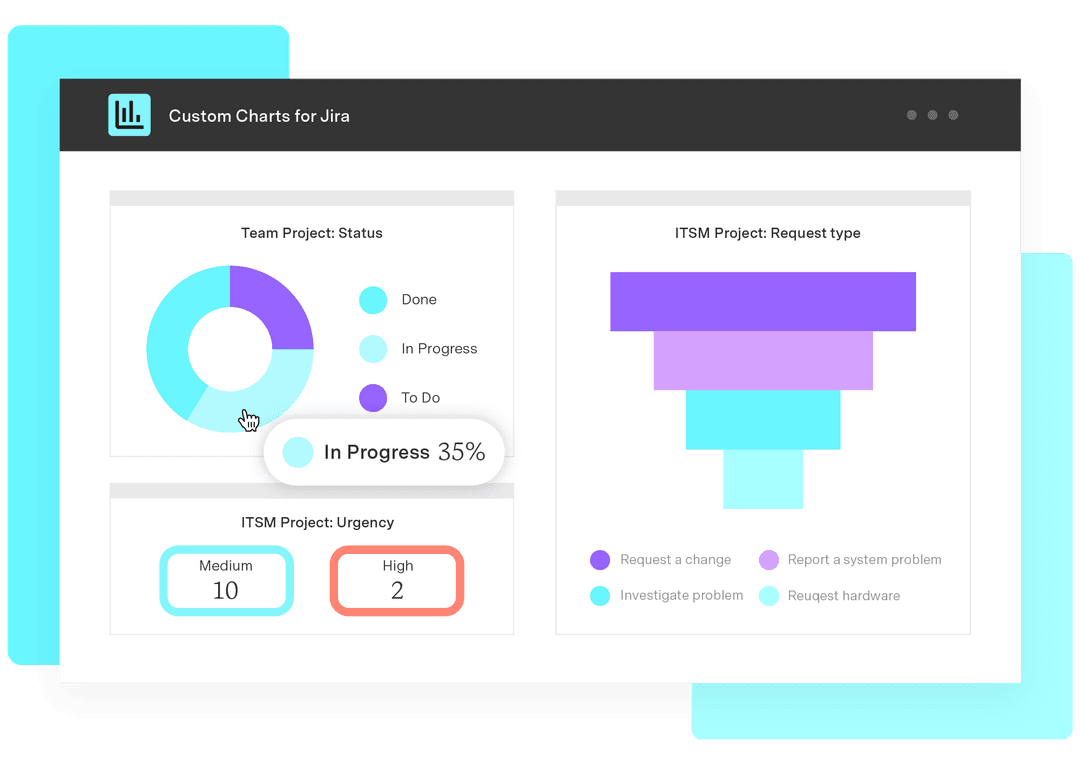How to do epic reporting in Jira
Tempo Team
We LOVE epics in Jira. Not only do they allow teams to organize their work into neat and tidy boxes, but when you report on them, they offer a big-picture view of the work being done. This is helpful for teams when they want a broad visual summary of their progress, and for managers and executives who want to check whether the work being done aligns with the company strategy.
So let’s explore how to make your epic reports truly epic! Stick around and you’ll learn:
What an epic is and they’re frickin’ great
How to report on epics from the epic directly
How to report on epics from your Scrum or Kanban board
What the Epic Report and Epic Burndown show
How to report on epics on Jira dashboards (and why dashboard reporting is better)
Some examples of epic reports you can make on dashboards
And if you want to go back a few steps, have a read of our guide to the basics of how to report in Jira.
What is a Jira epic?
An epic is a large body of work encompassing a bunch of smaller jobs. In Jira, an epic acts as a parent or container for other Jira issues all related to an overarching goal. Epics are an issue type in Jira just like tasks/stories and subtasks, and you make them just like any other issue, with a title, description, assignee, priority, due date etc. But then you can create issues under the epic, i.e. tasks and subtasks.
Basically, think of the subtask as the baby, the task/story as the mommy, and the epic as the grandma (coz, you know, grandmas are epic). In Jira you can also have another level above epics: initiatives, the great-grandma! Initiatives are useful for big enterprises because they’re a compilation of epics designed to achieve a much broader business goal. But, let’s leave these for another day!
A good example of an epic could be launching a new website. Under this, you’d have tasks for creating each page of the website, and beneath those, subtasks for specific things that need creating and adding to the pages.
Teams tend to complete epics gradually over a period of time. If you work in sprints, you might complete parts of the epic across several sprints. Epics may also encompass work from multiple teams, on multiple projects, tracked across multiple Jira boards.
Any size or type of team can benefit from using epics to organize and categorize their work. But for bigger companies with large Jira instances and thousands of issues, epics—and epic reporting—are necessary for good visibility and strategic alignment.
How can I report on epics in Jira?

Directly from within the epic
The easiest place to track the progress of an epic is within the epic itself. In Jira Cloud, you can see a completion percentage for the issues in your epic. This view is nice and basic and gets the job done if you’re looking for a quick status update.
Agile boards

If your team uses a Scrum or Kanban board, your backlog offers a look into epic progress. This view has the added benefit of allowing you to drag and drop new issues into an epic while you’re working. Simply navigate to your backlog and expand the epics panel along the left side to view all of the open epics that are part of your board. Just like the epic issue view, this provides a high-level insight into the progress of the work.
Scrum board reports
If you’re a team that works in sprints and uses a Jira Scrum board, you have two board reports at your disposal, which look specifically at the progress of your epics: the Epic Report and the Epic Burndown.

The Epic Report
The Epic Report displays how much estimated work still needs to be completed. It also highlights the unknown by tracking your unestimated work and is particularly useful for planning work for an epic that could span multiple sprints.
Epic Burndown

The Epic Burndown lets you see how quickly your team is working through the epic and how work added or removed has affected their overall progress. Best of all, it gives a great view into the future, forecasting when the epic will be completed based on the estimated work remaining and your team’s sprint velocity.
However, the problem with both the Epic Report and the Epic Burndown is that they only cover issues on the board you’ve generated them from. So, if your epic has issues spanning other boards, these two reports won’t show them. I know, not very useful if you’re a big enterprise after higher-level reporting!
Plus, if your team uses a Kanban board, there are unfortunately no epic-specific reports available. To see epic-specific information, you can run a basic or Jira Query Language (JQL) search to produce a list of issues matching the search term. Useful? Sure. Visual? No.
Jira dashboards
For more visual reporting on epics, Jira dashboards will make your eyes sing. Using out-of-the-box dashboard gadgets or the more customizable ones that you get with marketplace apps like Custom Charts for Jira, you can slice and dice the data a hundred different ways.
Jira dashboards act as one central location for all of your epic reporting, across multiple boards, projects, and teams. With Custom Charts for Jira, you can use a filter or avoid JQL entirely by selecting options from a dropdown. You get a variety of different chart types and can report broadly on epics or more granularly on the tasks/stories they comprise. You can also make a chart about an epic, then use the accompanying Simple Search gadget to drill down into it, or create a list of issue details using the accompanying Issue List gadget.
Anyone can use Jira dashboards and Custom Charts to report on Jira issues. You don’t have to be working on a Scrum or Kanban board to pull the data and use it. Maybe you have a manager who works in Confluence or Microsoft but wants a quick overview of a team’s or multiple teams’ epics. As long as they have access to Jira and the correct permissions, they can visualize that overview on a dashboard.
Epic reports you can make on Jira dashboards
Here are some example reports you can make on Jira dashboards to monitor your epics.

Issue Count and Average Story Point in Epics
The table chart above, produced using Custom Charts for Jira, is useful for monitoring the size of your epics. Too many issues can indicate that the scope of the epic may be too large, and high story points can draw attention to potential resource/capacity concerns for small teams.
You’ll also note that this table includes “None”, i.e. issues that are not connected to any epic. Seeing this helps teams monitor how many issues are being worked on that are not part of larger initiatives, and for sparking conversations about the importance/relevance of those issues.
Status of Issues in Epics

The 2D stacked bar chart above is a highly visual way of monitoring the completed and remaining work across your epics, and as a possible measure of whether your team is on track.
Age of Epics

This pie chart, if limited to open epics, is useful for monitoring how long your epics have been running and whether certain epics need investigating for delays and bottlenecks.
Epic Issue List

We can use the Custom Charts Issue List gadget to show detailed information on a list of epics. In the Issue List above, we’re using the Simple Search gadget (which also comes with Custom Charts) to filter the list to only display bugs, stories, and tasks across two specific epics. We’ve also added two quick filters to drill down further and ascertain which issues are still open, and which have not been estimated.
Conclusion
Out of the box, the epic reporting available to you in Jira consists of some basic insights in the backlog and the epic itself, and if you’re using a Scrum board, two board reports: the Epic Report and the Epic Burndown. And while these are powerful, they become instantly less useful if your epics span multiple boards.
Dashboard reporting on Jira epics offers much more versatility, as the reports you make there aren’t limited to any board or project and do not need producing one at a time. You can make multiple reports and monitor a variety of epic metrics in one place. And with Custom Charts, you can make all kinds of fully customized charts, graphs, and tables for maximum audience engagement. That way, you can offer the most targeted and relevant big-picture view of the work being done at both the team and enterprise levels.
To start experimenting with custom epic reporting on a Jira dashboard, download a free trial of Custom Charts for Jira on the Atlassian Marketplace.
Sign up for a demo
Register











































